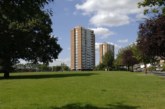
Paul Collins, Technical Services Manager at NICEIC, offers electrical safety advice for social landlords.
Thankfully, the UK has a relatively good record of electrical safety, but the recent tragic events at Grenfell have seen an unprecedented focus on the way social landlords provide housing which is fit for purpose. How can local authorities ensure the electrics in their housing stock and properties are safe? The three major hazards from electricity in the home are electric shock, fire and burns. These can occur through:
- The electrical installation and equipment deteriorating over time.
- Damage to switches, sockets and other equipment.
- Misuse of the installation and equipment.
- Poor or lack of maintenance of the installation and equipment.
- Vandalism
Social landlords have a responsibility to ensure all residents — or anyone entering a property — are not put at risk, by ensuring that the electrical installation remains in a safe and serviceable condition. To meet these requirements a landlord will need to regularly carry out basic safety checks to ensure the electrical installation and appliances are safe and working. This means ensuring:
- That the electrical installation in a rented property is safe when tenants move in and maintained in a safe condition throughout its duration.
- That a House in Multiple Occupation (HMO) has a Periodic Inspection carried out on the property every five years.
- If your property is not an HMO, you are not legally obliged to do this. However, it is recommended that a Periodic Inspection is carried out by a registered electrical contractor on your properties at least every five years.
- That any appliance provided is safe and has a CE marking.
What is an Electrical Installation Condition Report (EICR)?
Every electrical installation deteriorates with use and age. An Electrical Installation Condition Report (EICR) is like an ‘MOT of the electrics’ in a property and is issued after a Periodic Inspection. An electrician will check the condition of an existing electrical installation against BS 7671, the UK Standard for the safety of electrical installations and then issue the property owner with an EICR.
An EICR should identify:
- Electrical circuits or equipment which are overloaded.
- Potential electric shock risks and fire hazards.
- Any lack of earthing or bonding.
- Any defective electrical work.
Tests are also carried out on the installation to check it is safe. The frequency of an electrical inspection and test really depends on factors such as the type of installation and how it is used and maintained. For domestic properties, it is recommended that one is carried out every five years or at change of occupancy. However, regular visual checks should be carried out for signs that the electrics are still safe. The visual check should include ensuring there are no burnt, broken or missing switches or sockets, no accessible live parts and no signs of scorching or burning on electrical equipment.
Who should carry out electrical work?
It is important that any electrical installation work is carried out by a competent person. That means people with the knowledge, skills and experience needed to avoid dangers to themselves and others that electricity can create. Local authorities should only employ electricians and electrical contractors who are registered with NICEIC or ELECSA and who adhere to the UK safety standards BS 7671. They will issue a safety certificate and a building control compliance certificate for their electrical work to confirm the installation has been designed, built, inspected and tested in line with that standard.








